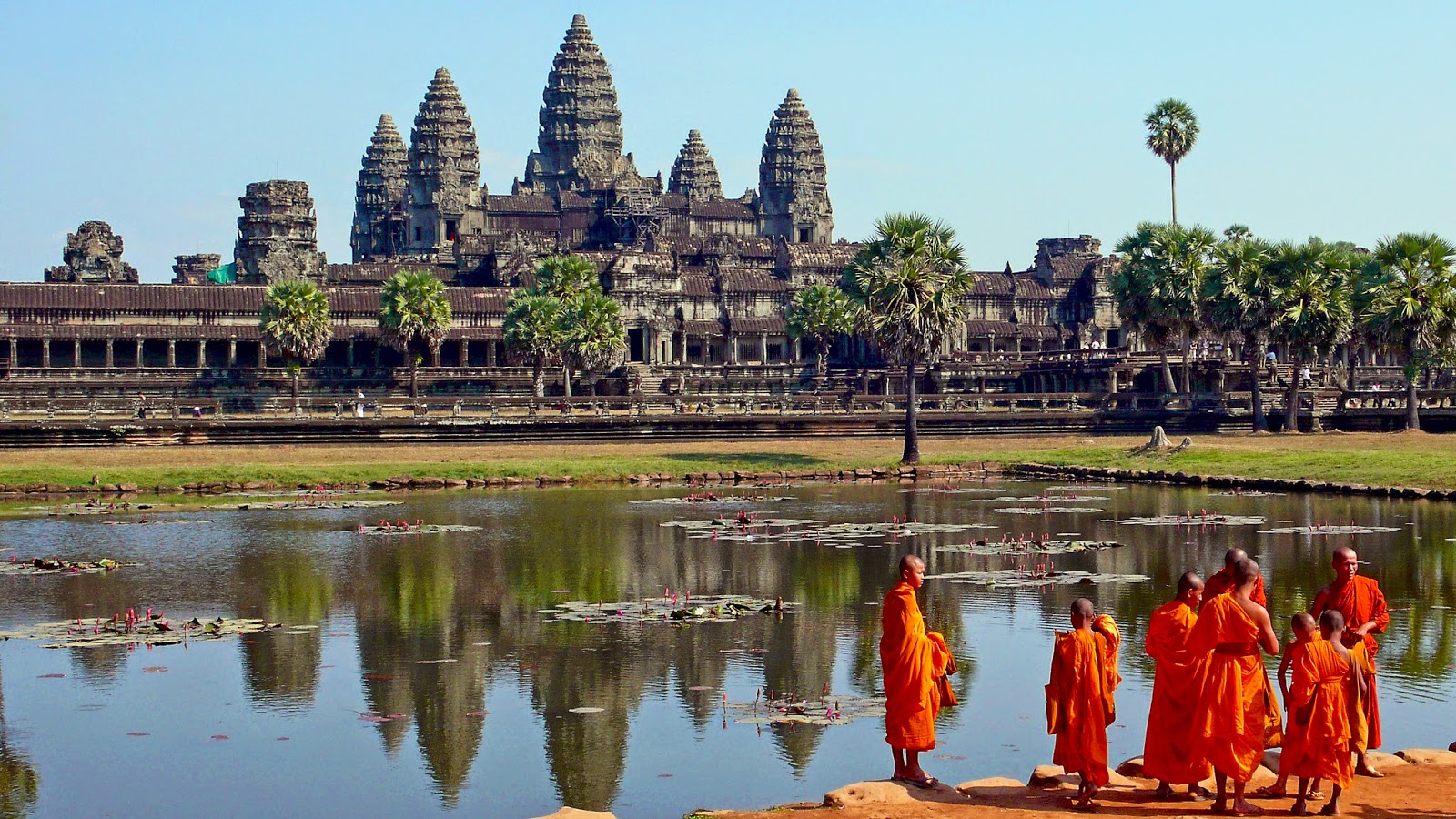The masterpiece of Angkor Wat is Cambodia’s most beloved and best preserved temple. The 500-acre site is one of the largest religious monuments in the world and represents the architectural pinnacle of the Khmer Empire. Originally dedicated to the Hindu god Vishnu, it has remained a place of worship since its founding in the 12th century. Thought to be a miniature replica of the universe, its composition of towers, moats and concentric walls reveals an architectural sophistication, and the bas-reliefs with their plump figures and triumphal battle scenes reflect a robust, healthy and wealthy period of history.
This majestic structure lies at the heart of the Angkor Archaeological Park, which covers 154 square miles and contains scores of other Khmer temples dating from between the ninth and 15th centuries. Each has its own allure. Banteay Srei has intricate carvings of sensuous celestial dancers wearing bangles, beaded anklets and sheer drop-waist skirts. The pleats are still folded beautifully in the sandstone, 1,000 years on.
Ta Prohm is one of the most photographed temples, deliberately left mostly unrestored, and tangled and strangled by undergrowth. The perennial favourite, at Angkor Thom, is the Bayon temple, the towers of which are etched with enlightened bodhisattva faces and where enchanting bas-reliefs depict ordinary Khmer life rather than Hindu gods.
With the epic sweep of the Bayeux Tapestry and the humanity of The Canterbury Tales, it shows families preparing dinner, men getting drunk, some playing board games; there are tightrope walkers and circus acts; one woman helps another in labour; monkeys peek out between the spokes of cartwheels. After the landmark temples there are smaller but equally moving sites such as Ta Nei, Ta Som and Banteay Samre. Indeed, there are few places in the world with such an astonishing concentration of significant archaeological sites.
























0 comments:
Post a Comment